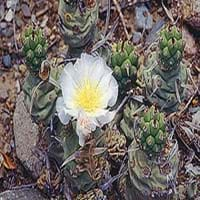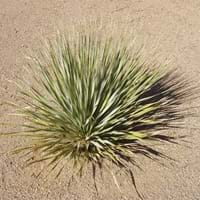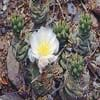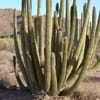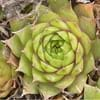Life Span
Perennial
Perennial
Type
Cactus or Succulent
Cactus or Succulent
Origin
Argentina
Southwestern United States, Mexico
Types
Not Available
Not Available
Habitat
Sandy areas, Terrestrial
Desert, Hot climate regions
USDA Hardiness Zone
9-11
12-15
Sunset Zone
8, 9, 12, 13, 14, 15, 16, 17, 18, 19, 20, 21, 22, 23, 24
10, 11, 12, 13, 14, 15, 16, 17, 18, 19, 20, 21, 22, 23, 24
Habit
Upright/Erect
Rosette/Stemless
Flower Color
White, Light Pink
Yellow
Flower Color Modifier
Not Available
Not Available
Fruit Color
Not Available
Tan
Leaf Color in Spring
Green, Olive
Green, Blue Green
Leaf Color in Summer
Green, Olive
Green, Blue Green
Leaf Color in Fall
Green, Olive
Green, Blue Green
Leaf Color in Winter
Green, Olive
Green, Blue Green
Leaf Shape
Succulent
Linear
Plant Season
Spring, Summer, Fall, Winter
Spring, Summer, Fall, Winter
Sunlight
Full Sun
Full Sun
Type of Soil
Loam, Sand
Loam, Sand
The pH of Soil
Acidic, Neutral, Alkaline
Neutral, Alkaline
Soil Drainage
Well drained
Well drained
Bloom Time
Spring, Late Spring, Early Summer
Spring
Tolerances
Drought
Drought
Where to Plant?
Container, Ground, Pot
Ground
How to Plant?
Seedlings, Stem Planting
Leaf Cutting, Stem Cutting
Plant Maintenance
Medium
Medium
Watering Requirements
Average Water Needs, Do Not over Water, Do not water frequently, Requires regular watering
Allow soil to be completely dry in between waterings, Needs less watering
In Summer
Lots of watering
Lots of watering
In Spring
Moderate
Moderate
In Winter
Average Water
Average Water
Soil pH
Acidic, Neutral, Alkaline
Neutral, Alkaline
Soil Type
Loam, Sand
Loam, Sand
Soil Drainage Capacity
Well drained
Well drained
Sun Exposure
Full Sun
Full Sun
Pruning
Remove damaged leaves, Remove dead branches, Remove dead leaves
Remove damaged leaves, Remove dead branches, Remove dead leaves
Fertilizers
All-Purpose Liquid Fertilizer
Does not require fertilizer once established
Pests and Diseases
Red blotch
Not Available, Red blotch
Plant Tolerance
Drought
Drought, Dry Conditions, Dry soil, Full Sun, Heat Tolerance
Flower Petal Number
Single
Single
Fragrant Bark/Stem
No
Not Available
Foliage Texture
Bold
Bold
Foliage Sheen
Matte
Matte
Attracts
Birds
Not Available
Allergy
Erythema, Swelling
Not Available
Aesthetic Uses
Landscape Designing, Showy Purposes
Borders, Decorating walls, Ground Cover
Beauty Benefits
Not Available
Not Available
Environmental Uses
Air purification
Air purification
Medicinal Uses
Burns, Gastrointestinal disorders, Urinary tract problems
Not Available
Part of Plant Used
Leaves, Stem
Not Available
Other Uses
Employed in herbal medicine, Used As Food, Used as Ornamental plant
Not Available
Used As Indoor Plant
Yes
No
Used As Outdoor Plant
Yes
Yes
Garden Design
Container, Houseplant, Rock Garden, Wall
Container, Dried Flower, Everlasting, Feature Plant, Rock Garden, Wall, Wildflower
Botanical Name
TEPHROCACTUS articulatus
DASYLIRION berlandieri
Common Name
Cholla
Blue Giant,
Blue Twister,
Desert Spoon
In Hindi
Cholla संयंत्र
Zaragosa
In German
Cholla Pflanzen
Zaragoza
In French
usine de Cholla
Saragosse
In Spanish
planta de Cholla
Zaragoza
In Greek
Cholla φυτών
Σαραγόσα
In Portuguese
planta Salão
Zaragoza
In Polish
roślin Hall
Saragossa
In Latin
plant Hall
Caesaraugusta
Phylum
Magnoliophyta
Chordata
Class
Magnoliopsida
Not Available
Order
Caryophyllales
Squamata
Family
Cactaceae
Agavaceae
Genus
Tephrocactus
Gonyosoma
Clade
Angiosperms, Eudicots
Not Available
Tribe
Cylindropuntieae
Not Available
Subfamily
Opuntioideae
Colubrinae
Number of Species
Not Available
Importance of Cholla and Zaragosa
Want to have the most appropriate plant for your garden? You might want to know the importance of Cholla and Zaragosa. Basically, these two plants vary in many aspects. Compare Cholla and Zaragosa as they differ in many characteristics such as their life, care, benefits, facts, etc. Every gardener must at least have the slightest clue about the plants he wants to plant in his garden. Compare their benefits, which differ in many ways like facts and uses. The medicinal use of Cholla is Burns, Gastrointestinal disorders and Urinary tract problems whereas of Zaragosa is Not Available. Cholla has beauty benefits as follows: Not Available while Zaragosa has beauty benefits as follows: Not Available.
Compare Facts of Cholla vs Zaragosa
How to choose the best garden plant for your garden depending upon its facts? Here garden plant comparison will help you to solve this query. Compare the facts of Cholla vs Zaragosa and know which one to choose. As garden plants have benefits and other uses, allergy is also a major drawback of plants for some people. Allergic reactions of Cholla are Erythema and Swelling whereas of Zaragosa have Not Available respectively. Having a fruit bearing plant in your garden can be a plus point of your garden. Cholla has no showy fruits and Zaragosa has no showy fruits. Also Cholla is not flowering and Zaragosa is not flowering . You can compare Cholla and Zaragosa facts and facts of other plants too.
